
El Niño and Warm Anomalies Restructure the Ecosystem
El Niño and Warm Anomalies Restructure the Ecosystem

Pleuronocodes planipes, the pelagic red crab, which increases markedly in abundance in the CCE region during most El Niños.
Credit: M. Stukel
California Current Ecosystem LTER researchers published a cluster of 5 papers in Deep-Sea Research (vol. 140, Oct. 2018) that analyzed biotic responses to two successive perturbations of the California Current pelagic ecosystem: the Warm Anomaly of 2014-15 followed by El Niño of 2015-16. These studies drew on 12 years of LTER process studies and an analysis of 66-year records from CalCOFI to develop a quantitative basis for forecasting future responses of biotic processes including primary production, zooplankton community composition, and carbon export.
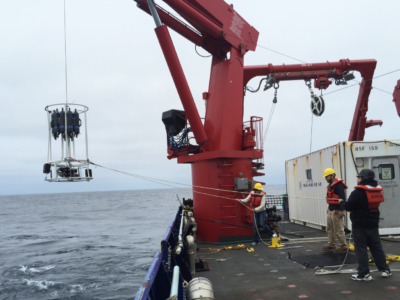
Iron Supply Broadly Influences Carbon Dynamics
Iron Supply Broadly Influences Carbon Dynamics
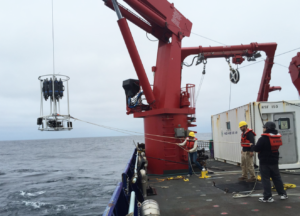
Sampling with a Trace Metal-clean rosette.
Credit: K. Barbeau lab
Iron supply in the CCE LTER region not only impacts carbon production and export associated with mesoscale circulation features. It also influences phytoplankton growth and species composition at the subsurface chlorophyll maximum layer (SCML), which is a widespread feature during spring and summer. Consistent with regional climate indices, biogeochemical proxies for iron limitation revealed increasing frequency of iron limitation at SCMLs in the California Current system. These results are relevant to upwelling systems worldwide.
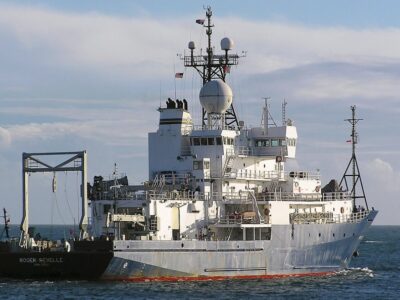
Episodic Events Alter Primary Production and Carbon Export
Episodic Events Alter Primary Production and Carbon Export
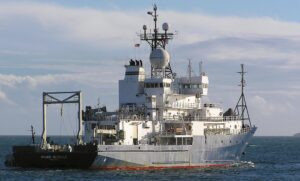
R/V Roger Revelle at sea, one of the research vessels CCE uses to investigate primary production, carbon export,
and plankton food web structure.
Credit: SIO Ship Operations
Process studies and related time series measurements reveal the under-appreciated importance of episodic events in the oceanic carbon budget. Spatial and temporal perturbations to the carbon cycle can be associated with (sub)mesoscale features (fronts, eddies, and filaments), which CCE LTER researchers have shown tend to be sites with enhanced phytoplankton and zooplankton biomass and production, and vertical carbon flux.
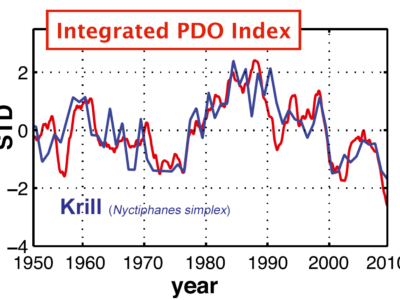
Double Integration of Climate Forcing
Double Integration of Climate Forcing
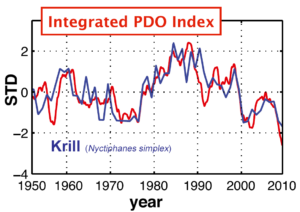
The Integrated Pacific Decadal Oscillation index (PDO, red) nicely predicts the variation in an important species of krill (Nyctiphanes simplex, blue) in the CCE site.
Credit: Di Lorenzo & Ohman, 2013
More than 60 years of zooplankton census data revealed that some populations respond indirectly to climate changes in two stages: first, ocean circulation responds to wind, then the zooplankton population level responds to ocean circulation. This broadly applicable principle of ‘double integration’ implies that direct correlations with climate variables should be replaced by metrics that reflect the biological time scale (e.g., life span) of the organisms concerned.

Optimized Satellite Remote Sensing Products
Optimized Satellite Remote Sensing Products
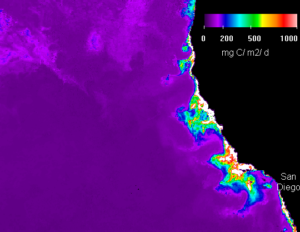
Satellite-estimated Carbon Export Flux (mg C m-2 d-1) from the new CCE-LTER MERGED product.
Credit: M. Kahru
Several years of effort have led to an important California Current merged satellite-derived 4 km dataset becoming openly available online. The website provides access to regionally optimized remote sensing products and rigorously integrated time series for chlorophyll-a, net primary production, and export flux of carbon from 1996 to 2019.










